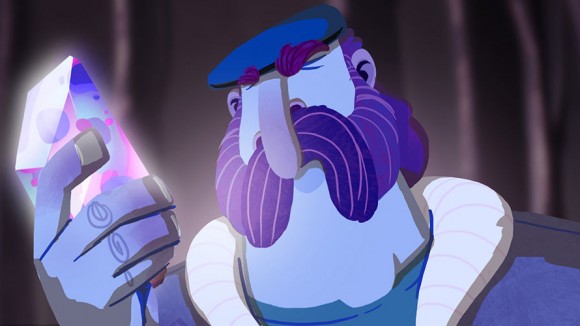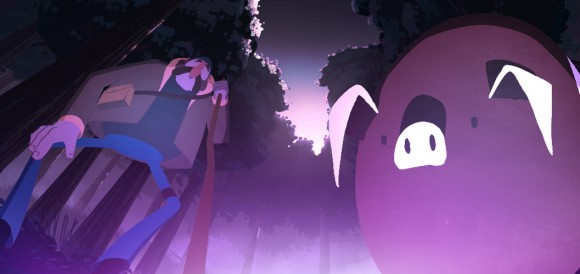

‘Truffle Pig’ Is An Immersive VR Short from Gentleman Scholar

On the surface, Los Angeles-based Gentleman Scholar’s short cartoon Truffle Pig is just another story about a guy and his mushroom-sniffing pig.
That is, until the guy, named Gustav, uncovers a magical jewel and the surreal 2D/CG-hybid VR immersion kicks in. Once it does, the viewer transforms into the existential hero of either a passive viewing experience or a free-play game, created for Facebook’s Oculus headset. Both choices promise a series of natural and supernatural settings and juxtapositions that are as visually interesting as they are evolutionary.
“We wanted to blend this traditional narrative with a gaming narrative, so that when you switch from third person to first person you really get this strange shift in perspective that lets you have power and take control over the story,” said Gentleman Scholar co-partner William Campbell in Truffle Pig’s behind-the-scenes explainer. Campbell along with studio co-partner Will Johnson were the creative directors of the project.
Whether or not audiences will process that perspective jump with Gentleman Scholar depends greatly on both the technology and the narrative in question. Campbell and Johnson, alongside associate creative director John-Patrick Rooney, CG supervisor Tim Hayward, and art director Trevor Conrad, initially fleshed out Truffle Pig as a 2D short before reconfiguring it as a real-time experience. The short’s pastoral and fantastical environs were built on the Unreal Engine, further blurring the line between animation and gaming. It’s enough to bring Truffle Pig rewardingly to life, but still only scratching the surface of things to come.
“We have a long way to go to really tap into the true potential of what VR can offer the commercial and storytelling community,” said Johnson, who with the rest of Gentleman Scholar’s compact crew has created a downloadable version of Truffle Pig for both Oculus Rift and PC that can be downloaded on their website.
“At the moment [VR] is an added dimension, an extra layer of immersion that requires the viewers to become familiar with the usability of the devices before the storytellers can then push the limits of reality,” the filmmakers wrote on their site. “We can carry our design-driven mentality into the world and art direct a beautiful environment, but we want to create something more. We want an emotional connection, a story. Our hope for the next steps of VR is to begin to see another level of interactivity aside from simply sight and sound.”
Oculus Story Studio, the official Oculus division that is exploring the storytelling possibilities of the Rift, unveiled its own visually interesting but nevertheless early-stage VR short Henry last month.

